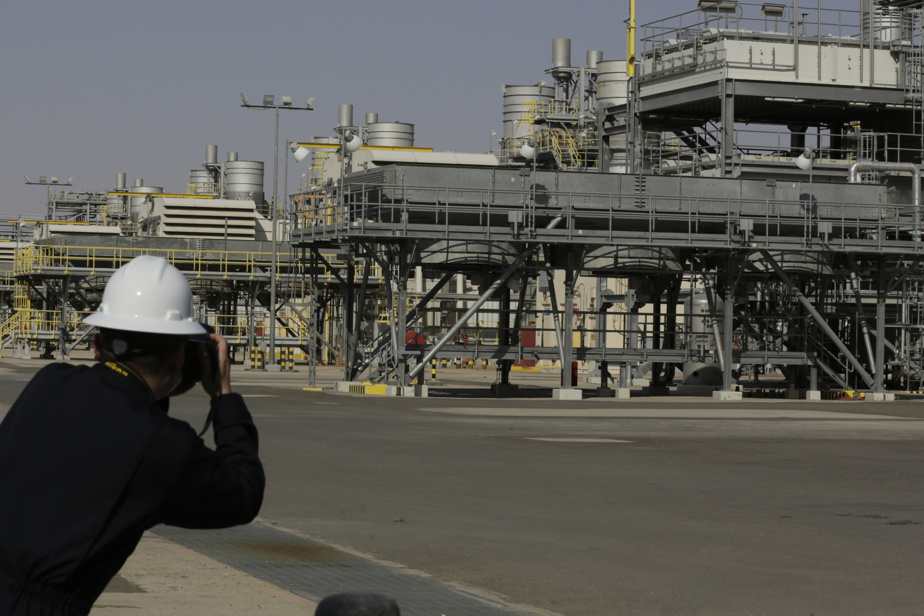(Riyadh) Saudi Arabia announced on Monday that it was extending its oil production cut by a million barrels a day to boost prices at half mast, with Russia announcing in the process to cut its exports by 500,000 barrels of oil per day. oil per day in August.
These measures are the latest taken by major producers to stabilize prices in the face of high market volatility, the lingering fallout from the Russian invasion of Ukraine and the faltering economic recovery in China.
Saudi Arabia, a heavyweight in the Organization of the Petroleum Exporting Countries (OPEC), decided in early June to cut production again in the hope of raising prices.
This reduction, which came into effect this weekend, will continue in August and “may be extended” beyond this period, the kingdom’s official news agency said, citing a source from the Ministry of Energy.
“The source confirmed that this additional voluntary reduction reinforces the precautionary measures taken by OPEC + countries with the aim of supporting the stability and balance of the oil markets,” the agency added.
This decision maintains the production of the rich oil kingdom at around 9 million barrels a day.
Announcing the cut last month following the meeting of oil producers, Saudi Arabia’s energy minister said it was potentially “expandable”.
In April, several OPEC+ members had decided to voluntarily cut production by more than a million barrels per day, a surprise move that briefly supported prices, but did not lead to a lasting rise.
” Balance “
Shortly after Saudi Arabia’s announcement on Monday, Russia said it would cut crude exports by 500,000 barrels per day in August.
“As part of efforts to balance the market, Russia will voluntarily decrease deliveries to oil markets by 500,000 barrels per day in August by reducing exports by this amount,” Deputy Prime Minister Alexander Novak said. , quoted by Russian news agencies.
Russia had already announced in February 2023 a drop in its crude production of 500,000 barrels per day, a measure which it said it wanted to maintain until the end of 2024. The decision announced on Monday concerns exports, not production.
Since the start of the conflict in Ukraine, Moscow has redirected its energy exports from Europe to India and China.
Algeria, another member of OPEC, also announced a cut of 20,000 barrels per day in August, which comes on top of a voluntary reduction of 48,000 barrels decided in April.
This decision was taken “in support” of Saudi and Russian measures aimed at promoting “the stability and balance of the oil markets”, said the Algerian Ministry of Energy, adding that the country’s production will thus amount to 940,000 barrels of oil per day in August.
Market reaction to announcements by Riyadh and Moscow, allies within OPEC+, which brings together OPEC members and other oil-exporting countries, was relatively muted.
Brent, Europe’s crude benchmark, rose 0.98% to $76.15 a barrel, and its US equivalent, WTI, rose 1.02% to $71.36 a barrel, far from the peaks recorded in March 2022 at the start of the conflict in Ukraine (nearly $140).
“Given that this is not a coordinated decision by all OPEC + members, it is difficult to imagine that this is a real upward movement,” said Chris Beauchamp. , analyst at IG.
For Jamie Ingram, an analyst at MEES, “Russia should not convince on the full respect of its commitments, but the most important thing is that it is a public commitment to support the Saudi strategy of market management”.
Since the start of the year, Brent has fallen by 11% and WTI by 7%.
Saudi Arabia, the world’s largest oil exporter, is counting on higher prices to finance an ambitious reform program that could enable its economy to move away from fossil fuels.
Analysts say the kingdom needs an oil price of $80 a barrel to balance its budget, well above the averages recorded in recent years.
